Parque Natural de Urkiola · Ayuntamiento de Abadiño
Situación
Menú principal
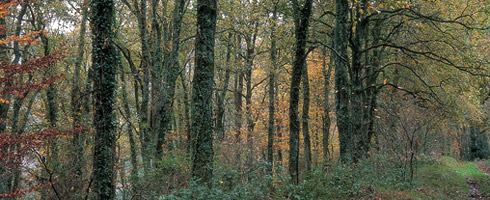
The mixed and oak forests grow on land rich in nutrients, most of the time on hillsides under 600 m above sea level. In those forests, the common oak is the most characteristic tree and even though it sometimes forms oak copses, it mainly grows among many other trees and bushes, such as the ash tree, field maple, the large-leafed lime, the birch, chestnut, hazelnut and the glossy buckthorn. The mixed forest is the one with the largest variety of trees in Urkiola, but it only accounts for a small surface area (less than 1% of the surface area of the Park).
Together with the common oak, the Sessile oak and the Pyrenean oak, they are found in the forests on the south slope of the Park. The Pyrenean oak, that usually grows in the drier sandy soils, often grows in copse next to beech trees on the limit between the hillside and the mountain.
Honeysuckle, the black bryony, ivy and blackberry are some of the typical plants in those forests.
The zone’s most outstanding mixed forests are those in the lower part of the northern slope of the Saibi, Gatzaieta, Olaetxe-Intxarrualde, Amilla and Axbizkar-Arranatx.
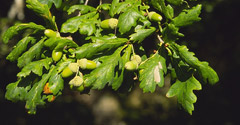
Robust deciduous tree, 15-40 m high, with a wide and round crown. The grey-brown bark on the trunk is thick and very cracked, Its leaves are lobulate and auriculated at the base. The hanging female and male flowers appear from April to May and the fruit is an acorn that hangs off a long peduncule. Mixed forests are to be found on the lower part of the northern slope of the Saibi, in Gatzaieta and in Intxaurralde. Oak is one of the most beautiful woods and was widely used for building the farmsteads. The oak is a sacred tree and plays an important role in Basque culture.
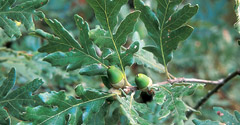
Deciduous tree up to 20 m high. The grey-brown bark is thick and very cracked. The leaves are similar to those of the oak, but the lobules are much more marked. They are also covered with fine white down, which is more notable on the back. It flowers from May to June and its fruit, the acorn, ripens during the autumn. They form small woods in the Park and are mixed with oaks and beech trees on the northern slope of the Saibi and in Kondebaso.
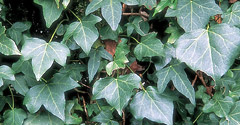
5-25 m climbing plant that may spread over the ground or may climb up the trunks of the trees and the walls. It has two types of shiny and hard leaves. The leaves on the sterile branches are lobulate and dark green. However, the leaves on the floral branches are elliptic and lighter. It flowers from August to October and the fruit is a poisonous black berry that ripens in the following spring. Its flowers are very popular with bees as a source of nectar.
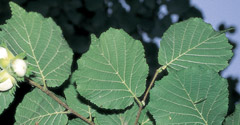
Deciduous tree, 2-5 m high and with numerous flexible branches that grow up from the base. The leaves are large and round, with a double serrated edge. The flowers appear during the winter, before the leaves. The male flowers are hanging catkins and the female flowers are barely visible on the small branches. The fruit, the hazelnut, is edible and highly nutritive. Its branches are used to make sticks and baskets.
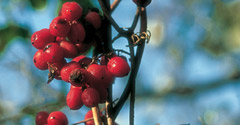
Climbing plant that is 1-5 m in length. The heart-shaped leaves are large, bright and alternate, with a long petiole. It flowers from April to June and the flowers, that are yellowish-green in colour, are grouped into small clusters. The male and female flowers are on different plants. The fruit is a poisonous red, or sometime yellow, berry that hangs in branches. It belong to a sub-tropical and tropical distribution family (Dioscoreacea) and is one of the few plants from families that lives in the template zone in the Northern Hemisphere.
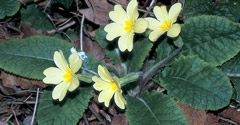
A small and downy plant, 5-20 cm, with a rosette of basal leaves with very marked nerves. It flowers from February to April and the flowers are yellow in colour, with five orangey marks at the base and there is one flower at the end of a peduncule. It is found in the mixed forests at the bottom of the valleys. There are different from the other two species of the same genre in the Park as it has single flowers that grow directly on the stalk, while the other two species (P. elatior and P. veris subsp. columnae) have flowers grouped into clusters.
2006 - 2007 © Anteiglesia de Abadiño Town Council - All rights reserved